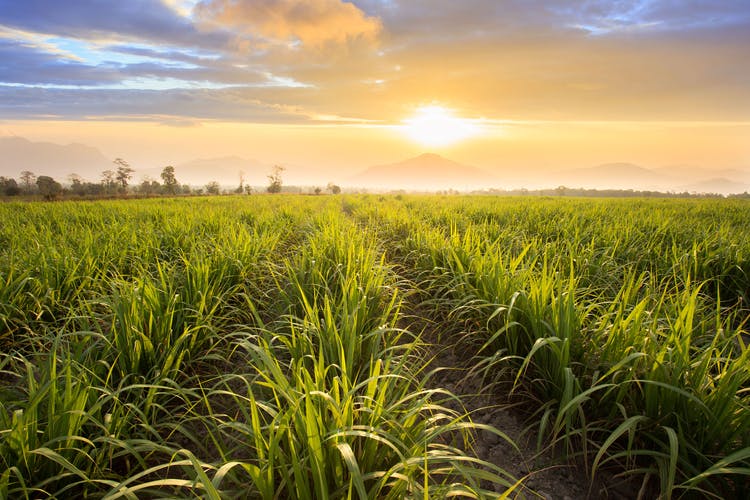
At first glance, rum production may seem fairly consistent across regions. Most distilleries follow similar steps, yet a closer look reveals many variations in the production process that significantly influence the final aromas of the spirit.
In this article, we’ll take a closer look at each key stage involved in the making of rum.
Trois ingrédients essentiels
Beyond its technical and technological aspects, rum production is built around three natural elements that shape its organoleptic profile: water, sugarcane, and yeasts, which generate both alcohol and the aromas developed during fermentation.
Water
The location of a distillery has historically been determined by access to a sustainable and pure water source—either naturally filtered (springs) or mechanically filtered (rivers and lakes).
A year-round abundance of water is one of the essential conditions for rum production, as this resource is critical throughout the process.
Water quality impacts five key stages in rum making:
- Irrigation of the sugarcane fields
- Imbibition of the crushed cane during juice extraction
- Composition of the must, whether made from cane juice, molasses, or syrup
- Cooling of mills, boilers, and condensers
- Dilution before bottling
Two main factors define the quality of water used:
- The absence of contaminants, such as pesticides or pollutants, which could alter the final product
- Its mineral content, especially levels of magnesium and potassium, which play a key role in fermentation and aroma development
Sugarcane
While rum must be made from sugarcane, a tall-stalked tropical plant, distilleries can process it in several different forms. Whether used as fresh juice or in derivative forms, the resulting rum will have a drastically different profile.
Vesou
Vesou is the fresh sugarcane juice, or must, extracted after crushing the cane in a mill.
It is the exclusive raw material of agricole rum. Due to its fragile nature, it requires near-immediate fermentation.
After juice extraction, what's left is bagasse, the fibrous residue of the cane.
Rums made from vesou tend to express the grassy, vegetal character of the original sugarcane much more clearly.

Sugarcane harvest in Martinique (©Neisson)
Syrup (Sirop de Batterie)
Sirop de batterie is a concentrated cane juice (cooked vesou obtained through partial evaporation of its water content). Concentrating the juice allows for longer preservation, and the cooking process develops toasty aromas similar to those of molasses, while still retaining some of the cane’s vegetal character.
Its name comes from the fifth and final boiler used in traditional sugar production. It’s also known as cane honey.
Molasses
Molasses is the thick, uncrystallizable syrup left over after extracting sugar from cane. It’s collected during the sugar-making and refining process in refineries. Although no more sugar crystals can be obtained from it, molasses still contains fermentable sugars, which can be used to produce rum through fermentation and distillation.
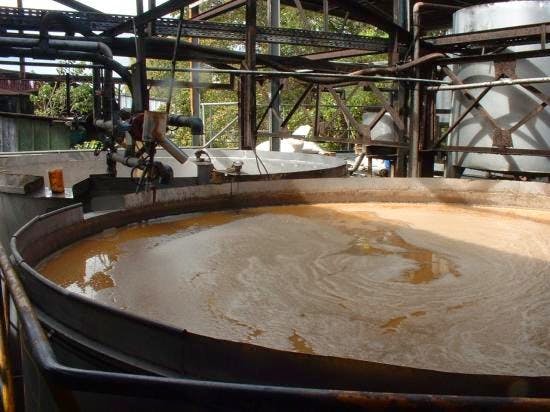
This thick by-product of sugar production has traditionally been the primary raw material of the rum industry. It yields rums with rounder, more toasted aromas compared to those made from fresh cane juice.
Yeasts
Yeasts are unicellular fungi that play a vital role during fermentation. They convert the fermentable sugars in the must into alcohol and carbon dioxide.
Rum owes a significant part of its aromatic identity to the yeast strain used.
There are two main types of yeast:
- Wild yeasts, naturally present in the environment, lead to what’s called spontaneous fermentation. These generate the highest levels of aromatic congeners, but are unpredictable and sensitive to climatic and microbial conditions.
- Cultured yeasts, selected for their ability to reduce fermentation time and adapt to high-density musts. The choice and proportion of cultured strains are tailored for each fermentation, as they directly affect alcohol yield and aromatic markers.
The Role of Bacteria
In addition to yeast activity, bacteria contribute to the development of congeners based on the secondary compounds produced during fermentation.
It’s worth noting that the bacterial flora found on sugarcane stalks ends up in the juice.
For heavy rums with high concentrations of congeners—such as certain Jamaican rums—dunder (a mix of stillage and organic materials) is added to the must.
Dunder acts as a booster for ester production—these are the aromatic compounds responsible for intense flavors like banana or pineapple in rum.
The creation of rum in five steps
Today, the key stages in rum production are essentially the same across all distilleries. However, beneath their apparent simplicity lies a wealth of technical expertise and craftsmanship.
Step 1: Extraction
Rum distilleries work with various derivatives of sugarcane: juice, molasses, or syrup.
Before extraction, sugarcane is carefully selected based on its ripeness and sugar content. It may also undergo pre-treatment (such as washing or chopping) to remove impurities and optimise juice yield.
Molasses and syrup are typically sourced from sugar mills, where the cane juice is either concentrated through evaporation (to make syrup) or processed to extract sugar crystals, leaving behind molasses.
These bases—molasses and cane syrup—are then mixed with water in a fermentation vat, into which yeast is added to initiate the next stage of rum production: fermentation.
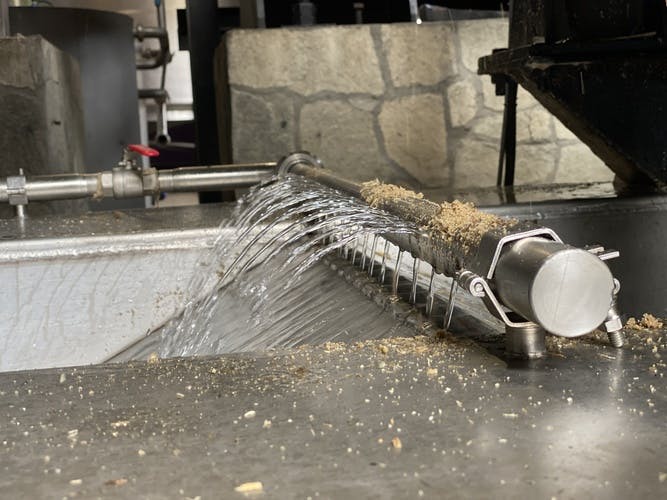
When a distillery produces rum from vesou (fresh sugarcane juice), it carries out the extraction itself using one or more crushing mills.
To maximize juice yield, the cane is crushed in double or multi-roller mills. During this process, it is doused one or more times with water to slightly dilute it, which helps optimize sugar extraction. The resulting vesou, or must, is a diluted solution of cane sap.
Filtration then removes what’s known as bagasse (the fibrous residue of the cane), which is often reused as fuel to power the distillery's boilers.
Step 2: Fermentation
After extraction, the musts—whether based on molasses, syrup, or fresh cane juice—are diluted again with water in open or closed fermentation vats, made of either wood or stainless steel.
These sugary liquids are then inoculated with yeast, which transforms the sugars into alcohol and carbon dioxide. Fermentation typically lasts between 2 and 7 days, depending on the desired aromatic profile. Beyond 7 days, fermentation naturally stops once all the available sugar has been consumed.
This stage is crucial for creating ethanol (alcohol) and aromatic congeners such as fatty acids, esters, aldehydes, acetals, ketones, and various phenolic compounds.
These compounds define the aromatic profile of the sugarcane distillate. Carefully controlling temperature and pH during this phase is essential to optimize yeast performance and ensure high rum quality.
The most common method is to inoculate vats with selected yeast strains, but in rare cases, spontaneous fermentation occurs using natural yeasts. This is practiced by only a handful of distilleries, such as Hampden or Rivers, and by small artisanal Haitian producers of Clairin.
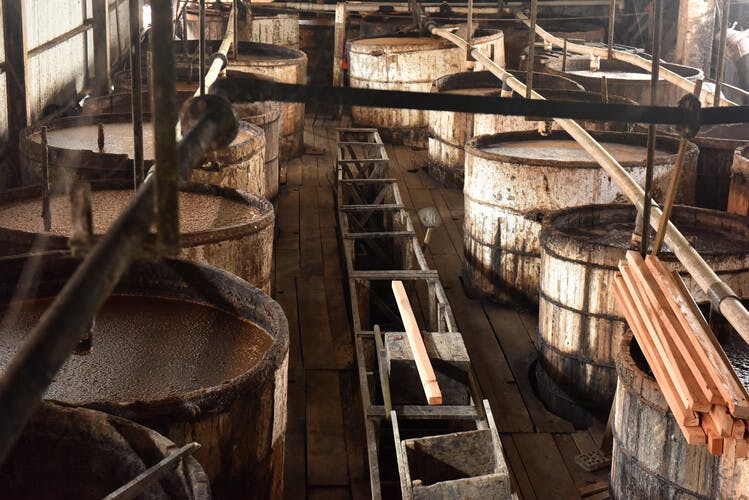
In this case, the distillate comes into direct contact with wild or indigenous yeasts naturally present in the environment. The downside of this fermentation method is that it is unpredictable, time-consuming, and yields less volume.
To support yeast growth, nutrients such as ammonium salts or vitamins are often added—especially in very refined musts.
The type of fermentation vat also plays a role: wooden vats often harbor a variety of microorganisms (including bacteria) that enrich the distillate’s aromatic profile, whereas stainless steel vats provide a more neutral environment.
In addition, techniques such as cooling or the use of inhibitors can be applied to stop fermentation at a specific point, helping to preserve the rum’s desired characteristics.
Step 3: Distillation
The goal of distillation in rum production is twofold: to concentrate the alcohol in the fermented cane juice or molasses, and to isolate specific aromatic compounds.
The process begins by heating the liquid in a still, which typically comes in one of three forms: a column still for continuous, efficient distillation; a pot still for batch distillation that enhances aromatic richness; or a hybrid still that combines the advantages of both.
As the temperature rises, the liquid begins to evaporate. Volatile substances evaporate at different points depending on their boiling temperatures. Ethanol, for instance, evaporates at 78.4 °C, while water boils at 100 °C. This temperature differential is key to effectively separating the various components.

Alambic à colonne pour distiller le rhum (©Neisson)
As the more volatile vapors—including ethanol—rise through the still, they pass into a condenser, where they are cooled and condensed back into liquid form. This step is crucial for capturing both alcohol and desirable aromatic compounds, while leaving behind less volatile substances.
In pot still distillation, the distiller’s expertise is especially evident in managing the cuts. Cuts refer to the points at which the distiller chooses which parts of the distillate to keep. These are typically divided into heads, heart, and tails.
The heart—containing the bulk of quality alcohols and aromas—is retained, while the heads and tails, which may include less desirable compounds, are often redistilled or discarded.
Step 4: Ageing in Casks
Unlike whisky, rum can be bottled without cask ageing. White rums can be aromatic and complex enough to enjoy neat—especially agricole rums—or they can serve as a base for cocktails with varying degrees of character.
For aged rums, cask maturation is the stage where the rum spirit matures over time. This period, which may last months or many years, involves the gradual loss of volume through natural evaporation, known as the angel’s share.
Several factors significantly influence the rate and character of this evaporation: temperature, humidity, thermal amplitude, atmospheric pressure, and air quality.
This is why a rum aged in the tropical climate of the Caribbean will develop differently—and more intensely—than one aged in continental Europe.
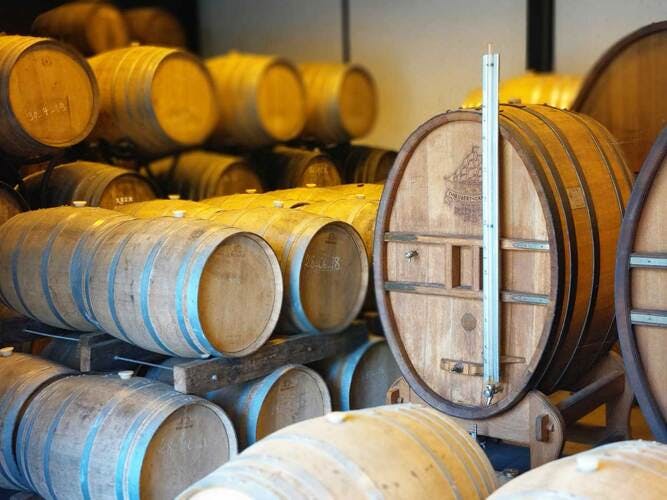
The type of cask used also plays a key role in shaping the rum's character. Casks may be new or previously used for other spirits—such as bourbon, sherry, or cognac—which imparts additional layers of aroma to the rum through residual notes from prior ageing.
The origin of the wood, typically oak, and the size of the cask also influence how the spirit evolves during maturation.
Step 5: Blending
The final step in rum production is blending—the careful selection and mixing of casks containing rums of identical or varying ages in precise proportions.
When blending is done using a limited number of carefully selected casks, the product is referred to as a small batch. This process allows for the creation of a harmonious and high-quality final product that reflects the distillery’s signature style.
In such cases, the age stated on the label must reflect the youngest rum in the blend, even if it represents only a small proportion. This rule, known as the minimum age rule, ensures transparency and integrity for the consumer.
However, this rule isn’t always followed—particularly with the solera ageing method, used in several Latin American countries.
The solera system, traditionally used for sherry, involves a series of casks arranged in stacked tiers. Each row contains rums of similar average age.
A small portion of rum is drawn from the bottom row, which holds the oldest spirit. It is then replenished with rum from the row above, and this continues up to the top tier, which contains the youngest rum.
With this method, only the age of the spirit in the top row is precisely known. As a result, the age statements on solera-aged rum labels are often higher than the actual average age of the liquid in the bottle.
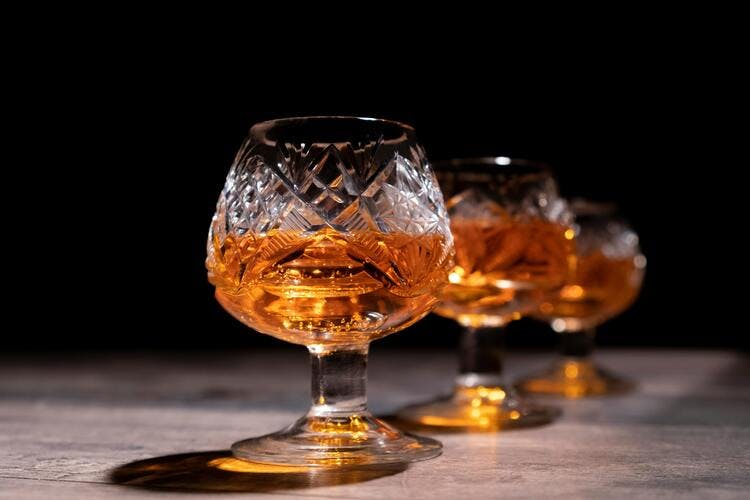
TO DISCOVER RUM FURTHER
La Maison du Whisky has three boutiques in Paris:
In each of these boutiques, you'll find a wide selection of whiskies, rums, sakes, and other fine spirits.
Follow our tasting calendar for upcoming events, or visit the Golden Promise Whisky Bar, which offers an extensive selection of whiskies and other spirits by the glass.
You can also discover other articles about armagnac.